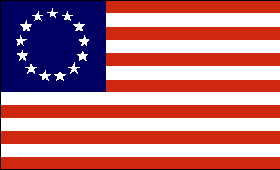Link To This Page — Contact Us —
The Battle of Barren Hill
May 20, 1778 at Barren Hill, Pennsylvania



| |||||||||||||||||||||
|
Gen. George Washington had discovered, through the network of American spies, that the British forces in Philadelphia were about to leave town and return to New York City. He detached a force from his Valley Forge camp and sent them towards Philadelphia. He assigned the command of the operation to Maj. Gen. Marquis de Lafayette. The objectives of this force was to gather information on the possible British retreat from Philadelphia, and to harass the expected British foraging parties that would be gathering supplies for the expected retreat.
On May 18, Lafayette left the Valley Forge camp. After crossing the Schuykill River and turning south, he took up position at Barren Hill, which was close to Matson's Ford. This area was the midway point between the British and American armies. It was here that the Americans made camp. A brigade and the guns were posted on the high ground, near a church, facing south. Another posting was at the Ridge Road to the south, and the Pennsylvania militia was sent to guard the road that led west from White Marsh. The British had discovered that the American force was nearby and decided to attack and destroy this isolated force.
On May 19, around 10:30 P.M., Maj. Gen. James Grant and a 5,000-man British force, including 15 guns, was sent toward Barren Hill. The plan was to take a circuitous route leading to the junction of White Marsh Road and Ridge Road. This would cut off any avenue of retreat for the Americans. A body of 2,000 grenadiers and dragoons would then move along Lafayette's left flank while another group would move into position on the American right flank. The plan would have the American position encircled from 3 positions, trapping them against the river. The British force was to wait until morning to attack and destroy or capture the entire American force. Gen. Lord William Howe, commander of the British forces at Philadelphia, was so sure of a British victory, that he had a big dinner planned for the night of May 20 to celebrate Grant's victory and to meet Lafayette in person.
On May 20, the British launched their attack. The militia scattered at the sight of the British troops, not offering any resistance and failing to notify Lafayette of the attack. On Ridge Road, the American group learned of the British attack. A small group was sent to fight a delaying action against the British while their commander sent word to lafayette about the developments. After Lafayette learned of the attack, another patriot came up and told him of the British advance up White Marsh Road.
Lafayette knew of another small road that led back to Matson's Ford that would bypass the British force. It ran along some lowground that would conceal the Americans from the British. The british did not know about this road. Lafayette ordered his men to retreat down this road while ordering a rear guard to delay the British at the church. A few small patrols were sent to engage the British, making them think that the American force was wanting to stay and fight it out. Lafayette calmed down his retreating force and slipped away with relatively few casualties.
Lafayette's plan had worked perfectly and the Americans crossed the river and headed back to Valley Forge.

